



Do you have a question about the ABB ScreenMaster RVG200 and is the answer not in the manual?
Highlights the recorder's capabilities including channel support, data security, and connectivity.
Provides links to download further publications and website information.
Describes ABB's position as a leader in instrumentation and process automation technology.
Emphasizes ABB's commitment to teamwork, manufacturing, technology, and customer support.
Details safety precautions, electrical hazards, standards, and conventions for safe operation.
Covers end-of-life disposal, cleaning procedures, and important safety symbols.
Lists the main functionalities including touchscreen, channels, alarms, totalizers, and connectivity.
Describes data display formats, logging mechanisms, and communication protocols.
Provides guidelines for proper recorder placement and environmental considerations.
Specifies the physical dimensions for mounting the recorder in a panel.
Highlights crucial safety warnings related to electrical installations and connections.
Details connections for analog/digital inputs, relays, power supply, and MODBUS modules.
Explains the initial power-up sequence and identifies front panel features.
Guides users through navigating different views, groups, and the main operator menu system.
Describes the vertical and horizontal chart views, including trace pointers and annotations.
Explains the indicator and bargraph views for displaying channel data and status.
Details the historical log of alarm events, including event tags, times, and status.
Covers the totalizer log for tracking activity and the audit log for system events.
Lists available menu items for operator interaction like group selection, views, and logging.
Explains how security settings control access to logging functions.
Details the process for entering, changing, and managing user passwords for logging.
Covers data archiving to SD cards, USB drives, and internal memory.
Describes archive file types, naming conventions, and file creation criteria.
Covers password protection, internal switch settings, and user access levels.
Details general settings like groups, language, archiving, screen, date/time, and security.
Explains configuration for process groups, channels, alarms, totalizers, and I/O modules.
Outlines the general process for configuring the recorder's settings.
Details how to locate and modify parameters using the interface.
Covers settings for number of groups, channel allocation, language, and global alarm acknowledgement.
Explains configuration for archiving media, screen saver, display options, and date/time.
Details how to configure process groups, tags, and recording enable sources.
Covers chart view settings, analog/digital input configuration, and alarm settings.
Explains setting up channels, source IDs, trace colors, filters, and scale types.
Details analog input types, digital input configuration, and alarm parameters.
Covers selecting input types (mV, V, mA, RTD, Thermocouple) and electrical range settings.
Explains how to configure linearizer types, units, and engineering ranges for inputs.
Details high/low, latch, annunciate, and rate alarms, including trip points and hysteresis.
Covers alarm enable sources, logging, acknowledgment timeouts, and alarm grouping.
Explains totalizer modes (Off, Standard, Timer), direction, wrap enable, and count range.
Covers log update frequency, count rate calculation, and cut off values for totalizers.
Details input calibration methods like offset and span adjustment for analog inputs.
Covers configuration for relay, hybrid, Ethernet, MODBUS TCP, and RS485 communication modules.
Explains how to set up custom linearizers and configure real-time alarms.
Details the logic editor for creating equations and math functions for calculations.
Covers configuration methods, display details, language options, and security features.
Details specifications for optional modules and environmental operating conditions.
Lists available analog sources and error states for inputs and archiving.
Describes digital input states, alarm states, and totalizer signals.
Details supported MODBUS commands and explains exception response codes.
Provides tables mapping MODBUS coils and registers to device functions and data.
Shows recording durations for 256MB and 2GB internal flash memory at various sample rates.
Details recording durations for SD cards and USB drives based on size and sample rate.
Lists common engineering units used for measurements and process values.
Provides a list of units specifically used for totalizer functions.
Explains the purpose of batch recording and how to start/stop manually or automatically.
Covers enabling batch security, configuring access privileges, and setting batch numbering.
Lists available characters for text entry in configuration and operator views.
Highlights restrictions on special and language-specific characters and potential display issues.
Provides contact information for ABB's worldwide service organization and support centers.
Lists contact details for ABB offices in the UK, USA, and India.
Highlights the recorder's capabilities including channel support, data security, and connectivity.
Provides links to download further publications and website information.
Describes ABB's position as a leader in instrumentation and process automation technology.
Emphasizes ABB's commitment to teamwork, manufacturing, technology, and customer support.
Details safety precautions, electrical hazards, standards, and conventions for safe operation.
Covers end-of-life disposal, cleaning procedures, and important safety symbols.
Lists the main functionalities including touchscreen, channels, alarms, totalizers, and connectivity.
Describes data display formats, logging mechanisms, and communication protocols.
Provides guidelines for proper recorder placement and environmental considerations.
Specifies the physical dimensions for mounting the recorder in a panel.
Highlights crucial safety warnings related to electrical installations and connections.
Details connections for analog/digital inputs, relays, power supply, and MODBUS modules.
Explains the initial power-up sequence and identifies front panel features.
Guides users through navigating different views, groups, and the main operator menu system.
Describes the vertical and horizontal chart views, including trace pointers and annotations.
Explains the indicator and bargraph views for displaying channel data and status.
Details the historical log of alarm events, including event tags, times, and status.
Covers the totalizer log for tracking activity and the audit log for system events.
Lists available menu items for operator interaction like group selection, views, and logging.
Explains how security settings control access to logging functions.
Details the process for entering, changing, and managing user passwords for logging.
Covers data archiving to SD cards, USB drives, and internal memory.
Describes archive file types, naming conventions, and file creation criteria.
Covers password protection, internal switch settings, and user access levels.
Details general settings like groups, language, archiving, screen, date/time, and security.
Explains configuration for process groups, channels, alarms, totalizers, and I/O modules.
Outlines the general process for configuring the recorder's settings.
Details how to locate and modify parameters using the interface.
Covers settings for number of groups, channel allocation, language, and global alarm acknowledgement.
Explains configuration for archiving media, screen saver, display options, and date/time.
Details how to configure process groups, tags, and recording enable sources.
Covers chart view settings, analog/digital input configuration, and alarm settings.
Explains setting up channels, source IDs, trace colors, filters, and scale types.
Details analog input types, digital input configuration, and alarm parameters.
Covers selecting input types (mV, V, mA, RTD, Thermocouple) and electrical range settings.
Explains how to configure linearizer types, units, and engineering ranges for inputs.
Details high/low, latch, annunciate, and rate alarms, including trip points and hysteresis.
Covers alarm enable sources, logging, acknowledgment timeouts, and alarm grouping.
Explains totalizer modes (Off, Standard, Timer), direction, wrap enable, and count range.
Covers log update frequency, count rate calculation, and cut off values for totalizers.
Details input calibration methods like offset and span adjustment for analog inputs.
Covers configuration for relay, hybrid, Ethernet, MODBUS TCP, and RS485 communication modules.
Explains how to set up custom linearizers and configure real-time alarms.
Details the logic editor for creating equations and math functions for calculations.
Covers configuration methods, display details, language options, and security features.
Details specifications for optional modules and environmental operating conditions.
Lists available analog sources and error states for inputs and archiving.
Describes digital input states, alarm states, and totalizer signals.
Details supported MODBUS commands and explains exception response codes.
Provides tables mapping MODBUS coils and registers to device functions and data.
Shows recording durations for 256MB and 2GB internal flash memory at various sample rates.
Details recording durations for SD cards and USB drives based on size and sample rate.
Lists common engineering units used for measurements and process values.
Provides a list of units specifically used for totalizer functions.
Explains the purpose of batch recording and how to start/stop manually or automatically.
Covers enabling batch security, configuring access privileges, and setting batch numbering.
Lists available characters for text entry in configuration and operator views.
Highlights restrictions on special and language-specific characters and potential display issues.
Provides contact information for ABB's worldwide service organization and support centers.
Lists contact details for ABB offices in the UK, USA, and India.
| Type | Paperless recorder |
|---|---|
| Analog Outputs | Up to 6 (optional) |
| Weight | Approx. 1.5 kg (3.3 lbs) |
| Display | TFT LCD |
| Input Channels | Up to 24 |
| Input Types | Thermocouple, RTD, mA, mV, V |
| Measurement Types | Temperature, pressure, flow, level, etc. |
| Accuracy | ±0.1% of span |
| Data Storage | SD card, USB |
| Communication Interfaces | Ethernet, RS485, USB |
| Power Supply | 100 to 240 V AC, 24 V DC |
| Operating Temperature | -10 to +50 °C (14 to 122 °F) |
| Protection Class | IP66 (front) |
| Dimensions | 144 x 144 x 158 mm (5.67 x 5.67 x 6.22 in) |
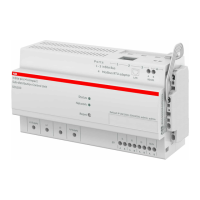
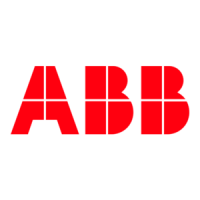
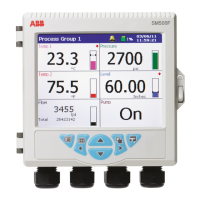


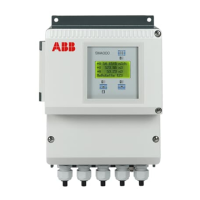
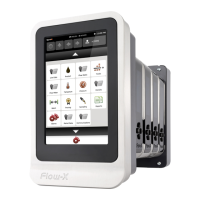
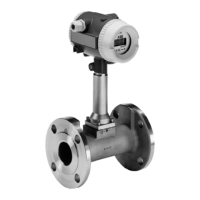
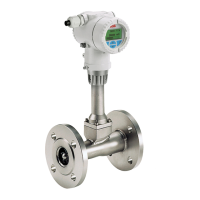

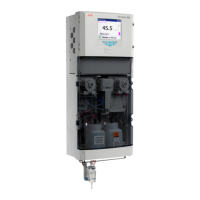
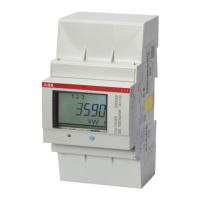
